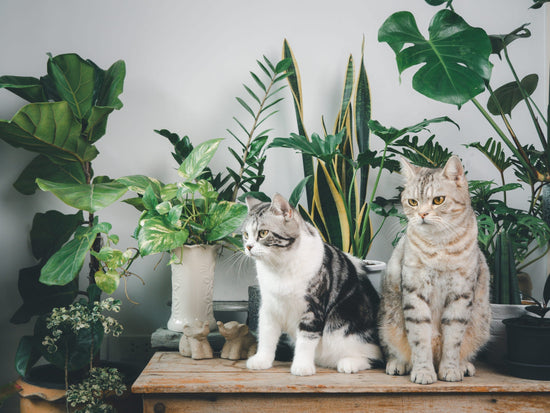Tropical plants bring an exotic flair to our homes – but they are often more sensitive than they appear at first glance. Their natural environment is usually characterized by constant, warm temperatures, high humidity, and different lighting conditions. Improper care or even the wrong location make many plants more susceptible to diseases and pests.
If your plant is not doing well
There are numerous symptoms that can indicate pests or diseases in houseplants . This makes it all the more important to monitor your plants regularly, detect changes early, and be familiar with the most common plant diseases. Warning signs include:
-
Discolored, limp, or drooping leaves
-
Light spots on the leaves
-
Sudden leaf shedding or growth cessation
-
Fine webs or sticky deposits
-
Small animals on the plant, in the soil or in the air
-
Unpleasant, rotten smell from the pot
Common diseases in houseplants
In order to save your plant and successfully combat the disease, it is important to know exactly what is wrong with your houseplant.
Deficiencies or care errors
While this isn't exactly a disease, such conditions can promote disease and often lead to similar symptoms, such as dry leaves. Too little or too much moisture, unsuitable light conditions, or even a lack of nutrients can cause your plant to appear unhealthy. A common symptom of nutrient deficiency is chlorosis. This causes the leaves to turn yellow, while the leaf veins often remain green.
Leaf spot disease
Not only dry or yellow leaves indicate a problem with your plant, but also black or brown leaf spots , often with yellow edges around the spots, are a serious sign that something is wrong.
root rot
Soft, slimy, or brown roots are a clear sign of root rot . While these changes usually only become apparent upon repotting, there are also external signs that indicate rotting roots, such as an unpleasant, foul odor from the pot. Discolored, limp leaves that don't improve despite adequate care can also indicate a problem in the root system.
mildew
Powdery mildew is a widespread fungal disease that can also affect tropical houseplants. A distinction is made between true and downy mildew —both forms are characterized by noticeable deposits on the leaves and cause significant damage to the plant.
Mold
White-gray mold on the soil surface is often a sign of overly moist substrate or waterlogging. While this soil mold is often harmless in small amounts, it can indicate an imbalance and cause long-term root damage.
Much more serious is gray mold, a plant-damaging fungus that manifests as mold growth on leaves, stems, or flowers. Affected plant parts should be removed and the plant placed in a drier location to prevent further spread.
Common pests of houseplants
In addition to diseases in houseplants, pests can also be the cause of your plant's weakening. They deprive the plant of nutrients and can cause significant long-term damage.
-
Fungus gnats : If small, black flies come out of the pot or around the plant when you water it, they are probably fungus gnats .
-
Whitefly : If white, flying insects rise up when you touch the plant, they could be so-called greenhouse whitefly .
-
Spider mites : These tiny creatures are barely visible to the naked eye. Instead, white or yellowish webs on the leaves indicate a spider mite infestation .
-
Thrips : These so-called thrips usually hide on the undersides of leaves. Thrips suck nutrients from the plant, leaving pale spots on the leaves—they often prove to be particularly persistent pests.
-
Aphids : Aphid infestation is not uncommon in tropical houseplants. Whether aphids , scale insects , or mealybugs – all suck plant sap and leave behind sticky deposits or weakened, discolored leaves.
Preventing diseases and pests on houseplants
With the right tips and good care, many diseases and pests can be avoided. Most of these problems occur when conditions are unfavorable for your plant—for example, due to waterlogging, cold, or a lack of light. Especially in winter, dry, heated air promotes the spread of some pests—a humidifier or regular spraying of the leaves can help. It's important to find a healthy balance: Too much moisture can lead to waterlogging and rotting roots. Therefore, observe your plant regularly—this way you'll notice changes early and be able to take quick action.





